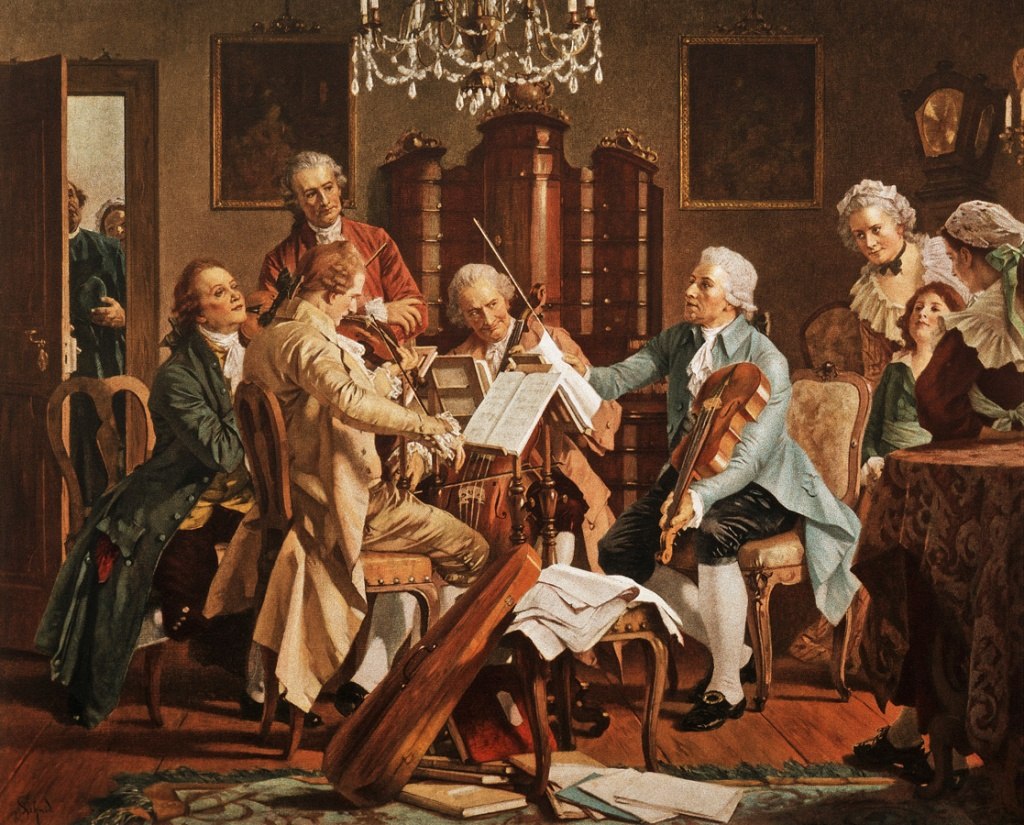Composed c.1783; 27 minutes
A few years ago, in the British Library in London, I was lucky enough to examine Mozart's original pen-and-ink manuscript of this quartet, under the watchful eye of musicologist Stanley Sadie. Unlike many of Mozart's compositions, what's immediately striking about the ‘Haydn’ set of quartets is the number of corrections and crossings-out in Mozart's hand. The celebrated, fragile music manuscript seems to come alive when you realize that, as he composed, Mozart had second thoughts about what he wrote. Here was a composer who was working hard to balance the instruments. He was clearly striving to create musical textures that were new and original. This was not music and ideas he was re-working. The composing score that he used for the set also includes abandoned fragments of other movements, a false start to one movement, a re-ordering of the variations in another – all reflecting the hard work he put into the composition of the collection. Nowhere else did Mozart labor so painstakingly over his music.
The reason for the extra effort was a set of quartets by Haydn, the older, more established composer of the two. They were the so-called Russian quartets, Op. 33. Haydn spoke of them as being in "an entirely new and special style." And Mozart knew this to be true. Haydn's supreme mastery of four-part writing and his ability to develop a fragment of a theme to its full potential were challenges the younger composer knew he had to meet. Mozart worked on his quartets off and on for more than two years. The set was not written for a particular occasion or for an aristocratic patron of music. So, in this evening’s E-flat quartet, the third of the set, Mozart took the time to experiment with the music. He learned how to distribute the musical material equally between the four instruments, seeking a genuine four-part musical discourse. The harmonies and modulations in these quartets are frequently daring and chromatic, notably in the first two movements of K. 428 – the yearning harmonies of the slow movement have even drawn comparison with Wagner’s Tristan and Isolde. A bouncy minuet and good-humored finale are both clear homages to Haydn. Mozart is believed to have worked simultaneously on this quartet and the D minor quartet of the set, going from one to the other, all the while polishing and refining the music. The quartets are, as he put it when dedicating the works to Haydn, the result of una lungha e laboriosa fatica, "a long and laborious toil."
 Mozart and Haydn are known to have played string quartets together privately. Irish tenor Michael Kelly gives a famous account of attending a musical party and hearing quartets played by four composers: Haydn (first violin), Dittersdorf (second violin), Mozart (viola) and Vanhal (cello). Along with two more from Mozart’s most recent set of six quartets, tonight’s was played at a later party in Mozart’s apartment on the Domgasse in Vienna on January 15, 1785. Haydn returned a month later for a second quartet party and heard the remaining three. This time Leopold Mozart was visiting his son. Haydn deeply admired Mozart's music and said as much to Leopold. “Your son is the greatest composer known to me either in person or by name,” Leopold reported Haydn as saying to him. “He has taste and, what is more, the most profound knowledge of composition.”
Mozart and Haydn are known to have played string quartets together privately. Irish tenor Michael Kelly gives a famous account of attending a musical party and hearing quartets played by four composers: Haydn (first violin), Dittersdorf (second violin), Mozart (viola) and Vanhal (cello). Along with two more from Mozart’s most recent set of six quartets, tonight’s was played at a later party in Mozart’s apartment on the Domgasse in Vienna on January 15, 1785. Haydn returned a month later for a second quartet party and heard the remaining three. This time Leopold Mozart was visiting his son. Haydn deeply admired Mozart's music and said as much to Leopold. “Your son is the greatest composer known to me either in person or by name,” Leopold reported Haydn as saying to him. “He has taste and, what is more, the most profound knowledge of composition.”
When the quartets were published in September 1785, Mozart dedicated the set to Haydn. “Your good opinion encourages me to offer them to you and leads me to hope that you will not consider them wholly unworthy of your favor,” he wrote in the dedication.